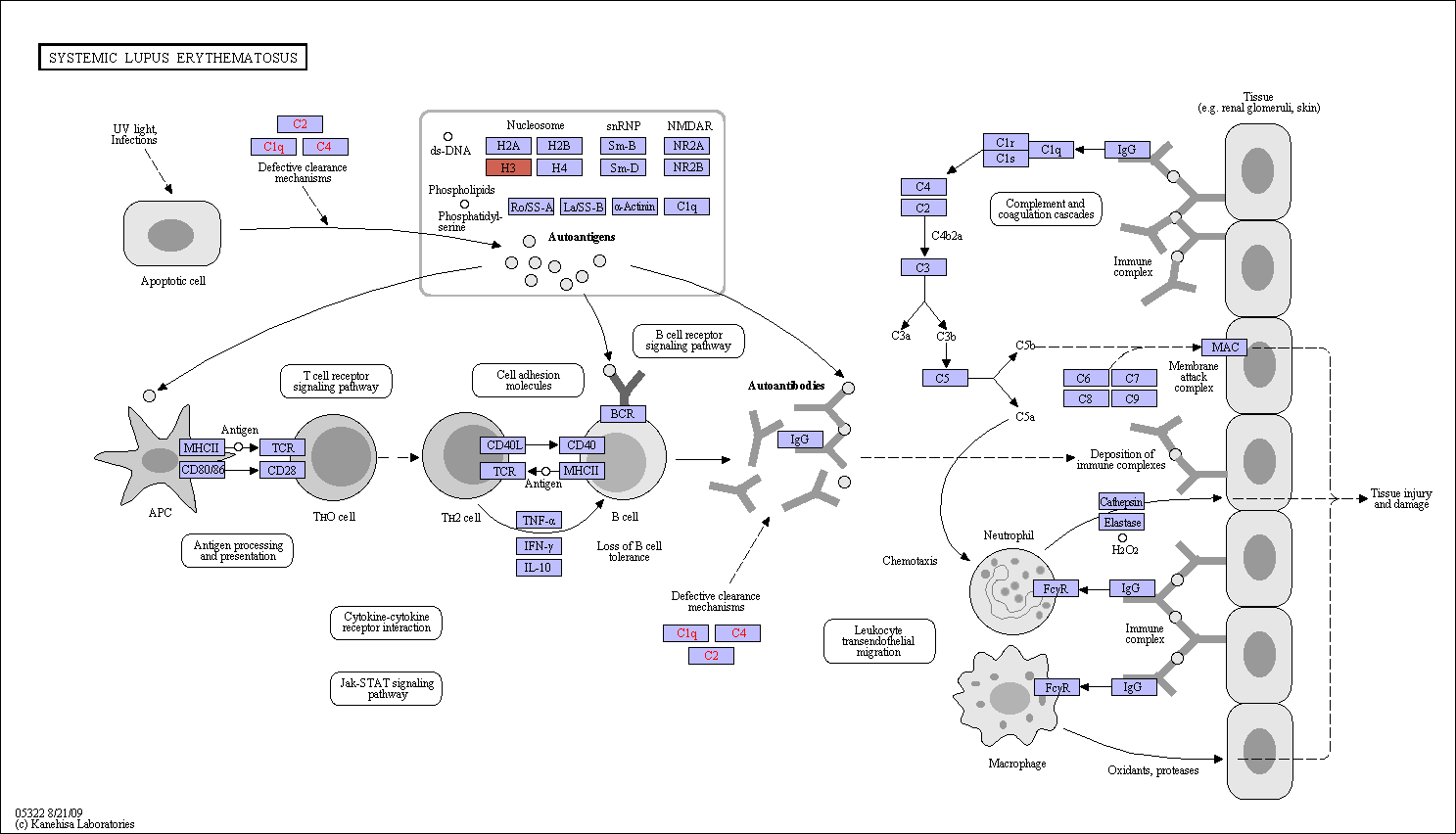|
Systemic lupus erythematosus (SLE) is a prototypic autoimmune disease characterised by the production of IgG autoantibodies that are specific for self-antigens, such as DNA, nuclear proteins and certain cytoplasmic components, in association with a diverse array of clinical manifestations. The primary pathological findings in patients with SLE are those of inflammation, vasculitis, immune complex deposition, and vasculopathy. Immune complexes comprising autoantibody and self-antigen is deposited particulary in the renal glomeruli and mediate a systemic inflammatory response by activating complement or via Fc{gamma}R-mediated neutrophil and macrophage activation. Activation of complement (C5) leads to injury both through formation of the membrane attack complex (C5b-9) or by generation of the anaphylatoxin and cell activator C5a. Neutrophils and macrophages cause tissue injury by the release of oxidants and proteases. |
 Systemic lupus erythematosus - Reference pathway (KO)
Systemic lupus erythematosus - Reference pathway (KO)

 Systemic lupus erythematosus - Reference pathway (KO)
Systemic lupus erythematosus - Reference pathway (KO)

